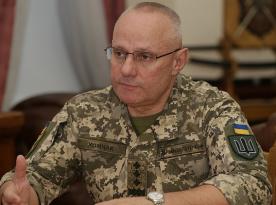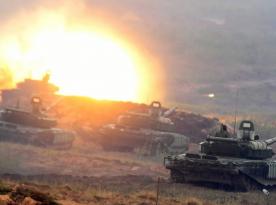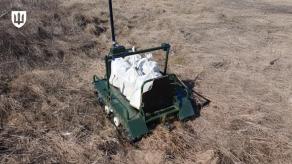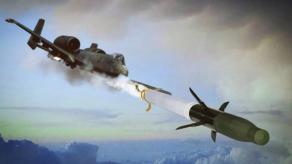On January 11, 2020, the Ukrainian General Staff announced a plan to reform the Armed Forces of Ukraine for the next 10 years.
І. GENERAL
Read more: Report names 10 of most powerful weapons NATO has to take on Putin's Russia
The Armed Forces of Ukraine should be held in esteem by the population and allies; they should follow the traditions of the Armed Forces; should be manned with trained, motivated personnel, armed with advanced armament and military equipment and be able to operate independently and jointly with the partners of Ukraine.
The Aim of the Vision of the Armed Forces of Ukraine is to form intentions and vision of the Commander-in-Chief of the Armed Forces of Ukraine, to determine the guidelines for the development of the Armed Forces of Ukraine in general and the Services (branches), including their activities for the next 10 years and the years since.
The Mission of the Armed Forces of Ukraine is to defend of Ukraine, to protect of its sovereignty, territorial integrity and inviolability.
Main Priorities of the Armed Forces of Ukraine Development:
Transformation of the Defense Forces joint command system and C2 system the Armed Forces of Ukraine, including the separation of authorities:
between the Ministry of Defence and the Armed Forces of Ukraine, accepting by the Armed Forces of Ukraine from the Ministry of Defence extrinsic functions and trained personnel;
between the General Staff of the Armed Forces of Ukraine, Joint Operational Staff of the Armed Forces of Ukraine (the Joint Forces Command), services, separate branches of forces (troops) Commands in terms of engagement planning, forces (troops) command and control and their generation, including the creation of Training Commands (TRADOC) in a structure of services, separate branches of forces (troops);
Air Forces and Navy Operational Commands creation and gaining a capability of command and control of respective forces and means during conducting of Defence Forces operation;
Staffs transformation to the J, G, A, N, S structures;
Development and implementation in all spheres of the Armed Forces of Ukraine activity NATO standards and procedures;
Increasing the quantity of troops, who take part in multinational trainings and NATO coalition operations;
High level of professional training of personnel, including specialty trainings in Ukraine and abroad. Their rotary based serving in all levels NATO staffs.
Ensure of intensive language education of military personnel and reaching by 100% of officers and at least 50% of sergeants the English skills, not lower then NATO STANAG 6001 proficiency profile 2.2.2.2;
Optimization of the quantity of the Armed Forces of Ukraine personnel, Staffs and services, separate branches of forces (troops);
Keeping military units in respective levels of readiness, their training, manning, armament, military equipment and stocks support, having existing armament and equipment in a proper condition. Along with that, the purchasing of armament and military equipment, first of all for the combat military units;
Development of armaments and military equipment, firstly of the modern assets of reconnaissance, EWs, communication, air defense, assets of fire power — in order to ensure the interoperability with the Armed Forces of partner-countries;
Restoration, keeping, infrastructure development and building of new military bases, their communal and exploitation support for accommodating of HQs, units and troops;
Granted priority for collective and joint training of all Defence Forces components, enlargement of the list of joint theoretical and practical exercises, which cover all spheres of fulfilling their joint tasks;
Synchronized gaining of capabilities of the State Defense Sector components, same type armament and military equipment development;
Set-up of effective cooperation of legislative and executing power to ensure complete development of the State Defence Forces;
Development of the Territorial Defence System;
Preparation of the territory and population of Ukraine for defence.
The Basic Principles are:
Patriotism — provides for defence of national interests, respect and devotion to the Motherland, its national symbols and values, culture, history, Ukrainian language, ideology, commitment, willingness to self-sacrifice for the sake of freedom and independence of the Ukrainian people;
Rule of law — ensures legitimacy, accountability, transparency and compliance with the principles of justice and democratic civilian oversight of the security and defence sector;
Unity of command — provides for the full authority of a commander over his/her subordinates; his/her personal responsibility to the state for all components of a unit activities; commander’s right to take decisions individually and to give orders; ensure implementation of decisions and orders, based on a comprehensive assessment of situation and requirements of Ukrainian legislation;
Personal responsibility — is an individual and integral responsibility of a military, irrespective of his/her position and rank, for carrying out duties, respecting military discipline, following the requirements of laws and regulations which govern his/her activity and behaviour;
Integrity — provides for the actions of a military aimed at defence of national interests, non-priority of his/her own interests while carrying out responsibilities, zero tolerance for corruption in its any manifestations, transparency in performing duties;
Leadership — is to facilitate the willingness to perform responsibilities appropriately, career promotion and personnel professionalization, implementation of effective and efficient human resources (personnel) policy and establishment of an appropriate military reserve, taking into account knowledge, combat experience and skills of a military when assigning to command positions; promotion of personnel cohesiveness and its aptitude for work;
Gender equality — provides for the equal opportunities, rights and responsibilities of men and women with respect to military service;
Respect for military personnel — implies that a military is a center of gravity for the national military and political authorities. Military personnel have decent service conditions established for them. Society is proud of military personnel and provides them with comprehensive support.
ІІ. THE ARMED FORCES OF UKRAINE
The Armed Forces of Ukraine in perspective structure should be capable of ensuring effective deterrence of an aggressor, preventing of military crises, providing the state defence and participating in multinational operations.
The peacetime structure of the Armed Forces of Ukraine should be as close as possible to the wartime structure. C2 (Command and Control), manning, training, combat support, mobilization and territorial defence systems must ensure timely, rapid and efficient Armed Forces transition from peacetime to wartime.
Perspective structure of the Armed Forces of Ukraine defines the main areas and objectives of their development. It is the basis that indicates the direction of the development and defines the context of the main actions of short and medium term planning activities.
The main priority will be given to the Special Operations Forces, Missile and Artillery Troops and Army Aviation of the Land Forces, Anti-Aircraft Missile Troops of the Air Force and Costal Missile and Artillery Troops of the Navy in order to ensure the reliable defence of Ukraine, protection of its sovereignty, territorial integrity and inviolability.
In a long-term perspective of the Armed Forces of Ukraine combat capabilities extension, the development of these services, separate branches of forces (troops) is paramount.
The Air Force, the Navy, the Air Assault Forces will develop, increasing their capabilities required to conduct joint operations in Ukraine under the leading role of the Land Forces.
Medical troops, Support forces, Logistic, Signal and Cyber security units should complete their formation and collective training within the shortest possible time in order to achieve combat capabilities to support combat units in combined, interdepartmental joint operations.
THE GENERAL STAFF OF THE ARMED FORCES OF UKRAINE
The General Staff of the Armed Forces of Ukraine is the main C2 body on strategic planning of engagement of the Armed Forces of Ukraine and designated forcers and means of the other Defence Forces components, coordination and control over the execution of defence missions by executive power, local authorities and defence forces defined by the laws of Ukraine, decrees of the President of Ukraine and the Cabinet of Ministers of Ukraine.
The General Staff of the Armed Forces of Ukraine:
is optimized in strength, based on the J-structure in accordance with adopted in NATO countries principles and standards;
coordinates the processes of forces (troops) generation and engagement
support the Commander-in-Chief of the Armed Forces of Ukraine on strategic matters of the Armed Forces of Ukraine, and control of their daily routine activities.
The units that were directly subordinated to the General Staff are managed by the Signal and Cyber Security Command, Logistic Command, the Support forces Command and the Medical forces Command of the Armed Forces of Ukraine.
The General Staff of the Armed Forces of Ukraine is headed by the Chief of the General Staff of the Armed Forces of Ukraine, who is subordinated to the Commander-in-Chief of the Armed Forces of Ukraine.
Authorities of the General Staff of the Armed Forces of Ukraine are determined by the legislation, functions and tasks are approved by the Commander-in-Chief of the Armed Forces of Ukraine.
THE JOINT FORCES COMMAND OF THE ARMED FORCES OF UKRAINE
The main functional responsibility of the Joint Forces Command will be planning and command and control of Joint Forces (troops) in operations of rebuff of military aggression and national contingents and personnel, which take part in multinational peacekeeping operations.
Nowadays, the Joint Operational Staff of the Armed Forces of Ukraine implements the authority of the JF Commander concerning C2 of Joint Task Forces of the Armed Forces of Ukraine and other Defense Forces components, command and control of the Joint Forces in the operation in Donetsk and Luhansk regions.
In the short term perspective, on the basis of the Joint Operational Staff of the Armed Forces the Joint Forces Command of the Armed Forces of Ukraine with respective J-structure will be formed.
The Commander of the Joint Forces will lead the Joint Forces Command of the Armed Forces of Ukraine, directly subordinated to the Commander-in-Chief of the Armed Forces of Ukraine and commands by the Joint Forces in all spheres of their engagement (on land, in midair, at sea).
In a middle-term perspective an autonomic functioning and mobility, respective living conditions for personnel of the Joint Forces Command of the Armed Forces of Ukraine will be ensured in a way of their accommodation in a newly built separate military base with modern infrastructure near developed transport network.
THE LAND FORCES OF THE ARMED FORCES OF UKRAINE
The Land Forces will continue to evolve so that they should able to carry out joint operations and to use combat systems in a comprehensive manner.
Armament and materiel of the Land Forces will be developed taking into account the gained combat experience, requirements of high mobility of units, independence of their actions and long-range fire engagement of enemy with precision guided weapons, with missile and artillery troops being their main carriers.
The main objective of the Land Forces Command will be force generation. For that purpose the HQ and the Training Command (similarly to TRADOC) will be established within the Land Forces Command.
The Training Command (TRADOC) area of responsibility will include:
development and implementation of doctrines, manuals, standards of training;
analysis of military experience and combat training;
leading of training centers, centers of units training, equipped with training simulators, training fields;
training of troops and staffs, impartial assessment of its results.
In addition, the Land Forces will form the basis of the state territorial defence to ensure its functioning both in peaceful time and in a war conditions.
The Land Forces strength will amount up to 50% of strength of the Armed Forces of Ukraine.
The optimization of the Land Forces strength will be carried out without reducing the combat capabilities of military units.
The operational (regional) commands’ areas of responsibility will be specified with respect to threats to Ukraine’s national security. Operational (regional) commands will be in charge of the territorial defence, mobilization and reserve training within its area of their responsibility. In addition, the training process will ensure the capability to provide C2 of the subordinate and adjusted forces and means in a certain operational area, depending on the military-strategic situation.
All general military Brigades will be units with permanents combat readiness, will be manned by trained personnel, supplied by armament and military equipment.
In order to increase the manoeuvrability of combat Brigades the optimization of units, their logistic support will be conducted in account with clarified scales of echeloning of their storages of material and technical assets and ammunition, ensured readiness of Reserve Corps to fulfil the tasks, which manned by personnel from operational reserve and supported with all types of armament and military equipment, stores of material and technical assets and ammunition.
In the medium and long term perspective the number of combat support units and as well as the number of educational institutions personnel will be optimized. Also, in the Land Forces there two centers of interdepartmental training (in Starychi and Shyrokyi Lan) will be functioning.
In total, the Land Forces will consist of:
- Operational Commands with subordinate Brigades, Regiments and support units, required to carry out an assigned tasks;
- Territorial Defence Brigades — for carrying out tasks beyond the area of operation;
- Reserve Corps;
- Higher military educational institutions;
- Training centers (training schools);
- Centers of troops training (including interdepartmental)
- Training fields (ranges).
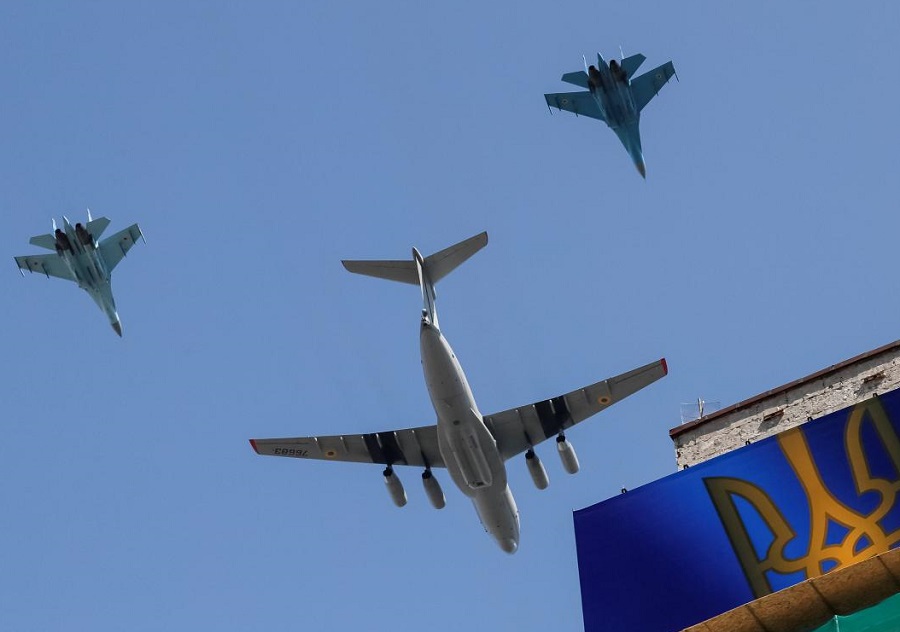
THE AIR FORCE OF THE ARMED FORCES OF UKRAINE
The Air Force will continue to develop in order to provide the most reliable protection of Ukrainian airspace, the cover (protection) of high-value infrastructure on the territory of Ukraine, and, most importantly, the cover-up of troops during operations.
Airborne early warning and control system should be synchronized with similar partner countries systems integrated into one system, based on early detection of enemy’s aircraft even when they operate at airfields.
Priority in the Air Force armament and materiel development will be given to purchasing of new and upgrading of existing pieces in order to increase the detection and fire engagement range, as well as to increase fire capabilities of air defence assets.
The main objective of the Air Force Command will be force generation. For this reason the HQ and the Training Command (similarly to TRADOC) will be established within the Air Force Command.
The authority of the Air Force Training Command will be determined similarly to the Land Forces Training Command.
In the future, an Operational Command will be formed in order to carry out planning and C2 of the Air Force units and assets.
The Air Force strength will amount to 1/6 of the strength of the Armed Forces of Ukraine.
In the medium and long term perspective there will be an optimisation of:
radar reconnaissance structure and composition;
educational institution and training centers strength of personnel;
combat service and service support units quantity and strength.
The Air Commands areas of responsibility will be specified in accordance with the operational commands’ areas of responsibility. The Air Commands will include the Air Regiments, created from the Brigades of Tactical Aviation and the Air Bases, which will support the operations of the above mentioned Regiments.
Air Defence Missile Brigades and Regiments will have mixed composition and will include stationary and mobile components.
The organizational structure of the Radar units will be specified taking into account their tasks, armament characteristics, location and areas of responsibility. Airspace control combat duty will be carried out by radar units on a rotary basis.
The Air Force will include:
- Air Commands with Air Regiments and Bases, military units of anti-aircraft missiles, radar troops and other supply units required to carry out assigned tasks;
- Operational Commands;
- Higher military educational institution;
- Training centers (training schools);
- Training fields (ranges).

THE NAVY OF THE ARMED FORCES OF UKRAINE
The Navy will continue to develop in order to provide the most reliable protection of the underwater space, protection of Ukraine in the sea area, support to the land forces formations.
Priority in the Navy development will be given to surface forces and coastal missile and artillery forces. A sufficient number of well-armed, manoeuvrable boats and ships will be achieved by building of boats and ships and their procurements from our partners.
The Navy will be equipped with the sufficient number of modern missile systems in order to engage enemy’s vessels. The availability of advanced air defence capabilities in the Navy will ensure a reliable engagement of enemy’s aircraft at the maritime area.
The main objective of the Naval Command will be the force generation. For this reason, the HQ and the Training Command (similarly to TRADOC) will be set up within the Naval Command.
Authorities of the Naval Training Command will be determined similarly to the Land Forces Training Command.
The Navy strength will amount to 1/10 of the strength of the Armed Forces of Ukraine.
A phased development of naval capabilities will be undertaken in order to make up for the Navy branches, to provide mobile and asymmetric engagement, primarily against adversary weaknesses in the medium and long term perspective.
The first stage will include the resonances system capability restoration and development, including establishment of control over territorial waters and beyond (up to 40 nautical miles from the coast). Maritime situational awareness systems should eliminate the suddenness of enemy action at sea and be compatible with similar partner countries’ systems.
In the second stage, capabilities will be developed to protect national interests at sea in the exclusive (maritime) economic zone of Ukraine.
Also, the structure of the Navy will be optimized and the Flotilla will be created with the task to train the surface naval component.
Command and control of naval operations will be entrusted to the Naval Command (in a future to Operational Command), while the land component deployment, counter-airborne operations and combat actions will be entrusted to the Marine Corps Command in a structure of Joint Tasked Forces in a certain area.
The Navy will include:
- Operational Command, Marine Corps Command with the full set of combat units and Military Naval Bases required to fulfil assigned tasks;
- Flotilla;
- Higher military educational institution;
- Training centers (training schools);
- Training field (range).
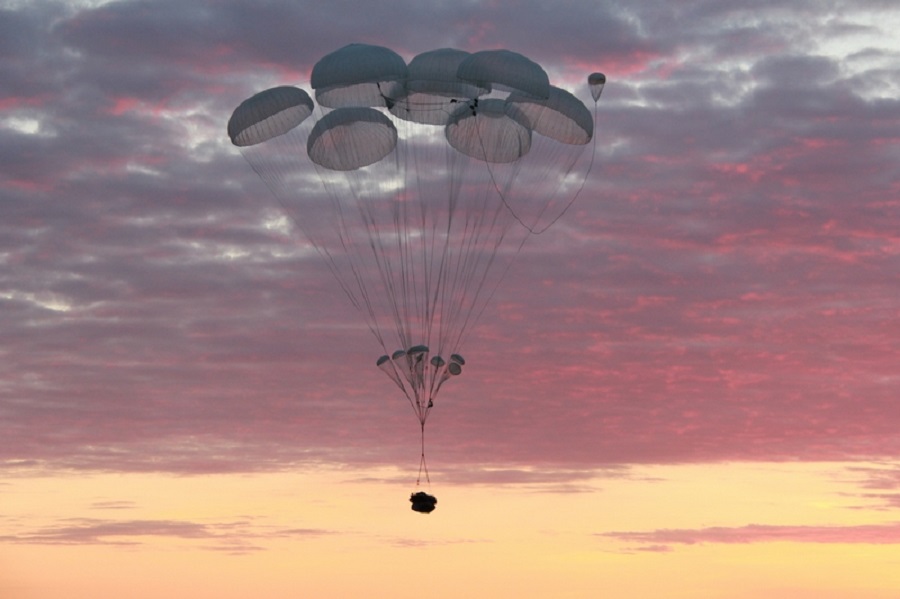
THE AIR ASSAULT FORCE OF THE ARMED FORCES OF UKRAINE
The Air Assault Force will be developed in such a way in order to provide rapid units deployment in threatening areas to deter enemy, as well as to complete the range of assigned tasks.
The Air Assault Force strength will amount to 1/10 of the strength of the Armed Forces of Ukraine.
The structure of the Air Assault Force will be optimized in a medium and long term perspective.
The Air Assault Force Command in its activity will simultaneously combine functions of generation of forces and command and control of their engagement.
Depending on the situation the Air Assault Force will be engaged as the Joint Tasked Force at a certain area or as attached Brigades to the Joint Tasked Force.
The Air Assault Force will include:
- Air Assault Brigades with required combat service and service support units (troops);
- Separate Artillery and Separate Recce Battalion;
- Training center;
- Training schools;
- Training field (range).
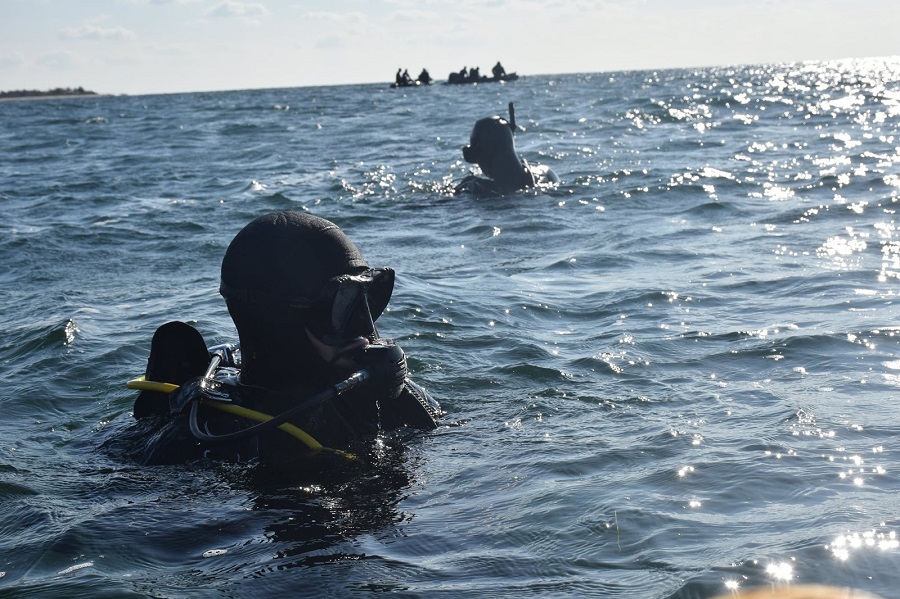
THE SPECIAL OPERATIONS FORCES
OF THE ARMED FORCES OF UKRAINE
The Special Operations Forces will be developed in such a way in order to reduce the enemy’s capability to advance in the territory of Ukraine, including on a temporarily occupied territory through organizing prospecting and sabotage activities of resistance movements (military assistance), carrying out psychological operations, and in order to carry out special missions beyond Ukrainian borders in the long run (subject to necessary changes to the legislation).
The Special Operation Forces strength will amount to 1/50 of the strength of the Armed Forces.
The Special Operations Forces Command will combine force generation and force engagement function.
The air and naval components of the Special Operations Forces will be created in the nearest future.
In the medium and long term perspective, the number of Special Forces Regiments will be optimized and reorganized into Special Forces Centers.
The Special Forces units, information and psychological operations units will be engaged under control Special Operations Forces Command jointly in the course of special and psychological operations or separately as supporting forces in Joint Force Operations.
The Special Operations Force will include:
- Special Forces Centers;
- Information and psychological operations Centers;
- Separate Air composite Squadron;
- Detachment of naval evacuation assets;
- Training center.
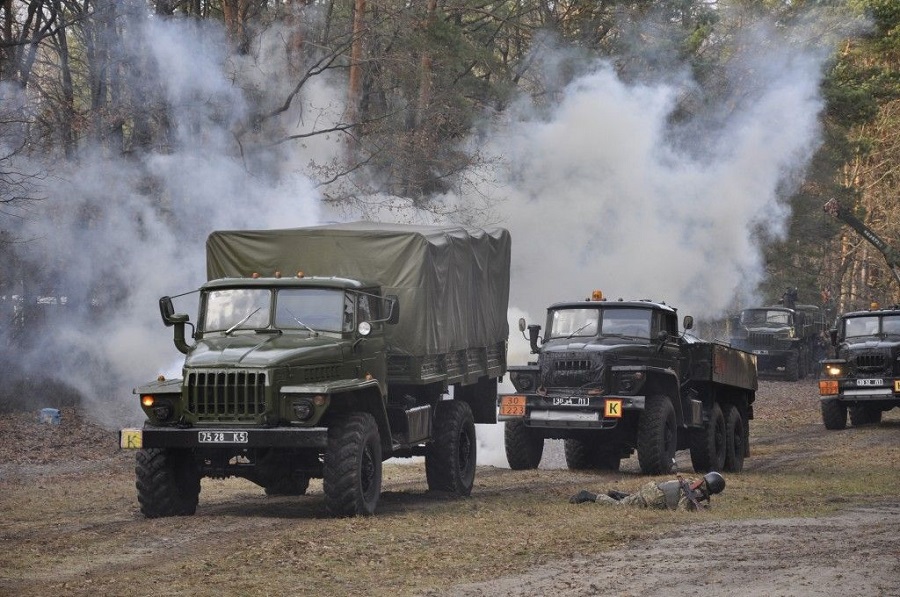
THE LOGISTICS FORCES OF THE ARMED FORCES OF UKRAINE
The Logistic Forces will continue to evolve in order to upkeep armament and military equipment, material assets and to supply by them forces (troops) of all Defence Forces components, as well as to create an effective infrastructural support system of forces (troops), which ensure the guarantee fulfilment of the main tasks: real estate management, ensure their accommodating in the permanent dislocation points and also while conducting operations, maintenance of objects and assets of infrastructure, energetic and communal services.
Determination of logistic support needs and planning will be the task for the logistic structure elements (J,G,A,N-4) of the General Staff, Commands of services, separate brunches of forces (troops), Operational (Air) Commands and military units
Organization of material and infrastructural support will be the task for the Logistic Forces Command.
In the medium and long term perspective, logistics support structure elements and units will be integrated into the Joint Logistic Centers.

ІІІ. PERSONNEL OF THE ARMED FORCES OF UKRAINE
Motivated personnel with the high level of professional training, educated in Ukraine and in NATO member states will be the basis of the Armed Forces of Ukraine.
Training
In personnel training, the emphasis will be given to specialists in training centers and training schools, leadership courses and tactical officer level courses at higher military educational institutions. Distance learning and certification of self-improved professional skills will also be widely used.
Responsibility for combat training and its results will be vested in the Commands of the armed services, in particular in Training Commands (similarly to TRADOC). Emphasis will be placed on the training and coordination of units on platoon — company — battalion level at the training centers of armed services with the participation of subject-matter instructors. For this purpose two centers will function within the Land Forces, and other armed services will include one center each.
The Centers capabilities will be enhanced by the use of simulation technologies and marking the actions of enemy units.
Combined and interdepartmental training will remain as a priority.
Education
Higher military educational institutions and military educational units of higher education institutions will become a part of the Armed Forces of Ukraine; they will be integrated into unique system and subordinated to the Training Department (J-7) of the General Staff of the Armed Forces of Ukraine.
Commandants of higher military educational institutions are appointed from among the officers of the Armed Forces of Ukraine on a rotary basis.
Manning of higher military educational institutions is carried out on a mixed principle, especially civilian fellow workers (professors) and instructors of military units of the Armed Forces of Ukraine are engaged on a rotational basis.
Manning
Manning and distribution of personnel is carried out in accordance with the passports of positions (J, G, A, N) of HQ structures.
New military ranks for the highest officers are planned to be implemented in the future.
The rotation of officers from the command to the staff positions and vice versa is envisaged.
In the long term perspective, the manning of the Armed Forces of Ukraine will be carried out on a contract basis with the effective military career management system for personnel, based on the rating promotion.
The NCOs is the basis of the professional Armed Forces of Ukraine, they are charged with the daily activity, training and direct command of soldiers in combat actions.
The professionalism of the NCOs is enhanced through multi-level training (including language training) and compulsory rotation on different verticals of service, in particular command, instructor, staff or logistic, including the assignment to other services of forces (troops).
Multi-level training includes basic, intermediate, advanced and higher courses, which consist of two stages — commander`s training and specialty training. Training of NCOs is also carried out at foreign military educational institutions and educational (training) centers.
The institute of instructors is formed, the training of which is carried out at three levels: basic, advanced, academic. Instructor positions have been introduced in units and higher military education institutions.
Contracted reservists are constantly receiving practical training directly in their military units.
The strength of rapid response combat units in a peacetime is maximally approached to the wartime’s one. They are manned with 90% contracted military service personnel and 100% of main armament and military equipment. This ensures a rapid response to the full range of risks and threats to national security in different parts of Ukraine.
The completeness of other combat troops should be at least at 80%. At the same time, if necessary, they will be completed exclusively by reservists assigned to these units and trained with them.
Combat service support and units can be manned at least at 75%. In the event of the emerging threat, they should also be augmented by trained reservists.
Such a system will ensure rapid deployment in case of threat with economy of resources.
In order to achieve this level of military unit’s manning with having well trained operational reserve, the state system of social guarantees must be established.
Social guarantees and protection
Service in the Armed Forces of Ukraine should be both prestigious and economically attractive. Along with high financial allowance, there are a number of attractive activities: free training in civilian institutions; free treatment, extended vacation; the possibility of obtaining housing at the expense of the state etc.

ІV. DIRECTION OF ARMAMENT, MILITARY EQUIPMENT, MATERIAL AND TECHNICAL ASSETS DEVELOPMENT
The development of armament and military equipment, first of all, must ensure the increasing of effectiveness, mobility, independence of actions and protection of units and troops with the purpose to achieve the security of the Joint Tasked Forces (Troops) in conditions of opposing to more powerful adversary.
Reconnaissance. When developing reconnaissance capabilities, special attention should be drawn to radar reconnaissance, as well as creation of capabilities to conduct tactical recce and the open sources intelligence. Reconnaissance equipment and weapons must be integrated into a single automated system. This system must be resistant to the action of the enemy’s EW and associated with similar partner country systems.
Reconnaissance assets and capabilities must be able to get, process and report an intelligence information in a timely manner and with high quality.
C2. It is necessary to rebuild the commander’s decision-making system (at all levels) of the Armed Forces of Ukraine. Commanders should be capable take a responsibility for making decision and its realization. Commanders are ready personally, with initiative, timely, reasonable make a decision and ensure command and control while its fulfilment in accordance with the current situation.
It is necessary to build an effective system of Command, Control, Communications, Computers, Intelligence, Surveillance and Reconnaissance (C4ISR), resistant to the external influence, protected by EW in the Armed Forces of Ukraine, which will have alternative communication channels.
Communication assets must be paired with partner countries’ communications assets.
It is necessary to create a information network of effective management of the State security and defence sector, which will provide the toolkit of information capabilities for getting, working out, saving, transferring, controlling and providing information upon the requests of commanders and staffs (tactical, operational nad strategic levels) of Joint Forces.
Fire support. The priority is the development and procurement of high-precision weapons, improving the accuracy and range of fire assets. Missile systems, MLRS must provide reliable enemy engagement at the long distances. All forces and assets of long-range engagement, especially combat aviation, artillery, including rocket and missile systems, air defence should be combined into a single sticking system.
To ensure long-range fire engagement it is necessary to create new capabilities, in particular missile system with the effective range of up to 500 km or more and unmanned attack aerial vehicles regiment.
Manoeuvrability (Mobility). Combat units should not be burdened with stockpiles, armaments and equipment should have enough endurance. Troops must be able to move in a threatening direction in a short time and complete the assigned task, knowing that they will be provided with everything they need. They should not be in “deaf” defence, but should be able to move quickly and appear in areas where the enemy does not expect them. Units and troops of all levels must be able to operate independently, in a whole isolation and also in small formations that are easy to be moved by air.
The transport infrastructure, assets and means of engineers must ensure the rapid and covert movement of troops to new areas. Engineers are able to equip positions quickly, breach the obstacles, create them and allow crossing over large water obstacles.
Ukraine’s railways must have the required number of platforms to move units quickly to different locations in the country. Duplication of all bridges over water obstacles must be ensured either.
Protection of troops (Survival). The enemy must spend considerable resources to accomplish its tasks. The way to achieve this goal is to manufacture and adopt the required number of models that simulate air defence systems, rocket systems, artillery, as well as models of tanks, aircraft, etc., which are the obvious target for enemy strikes.
It is necessary to develop and adopt camouflage complexes for all existing models of weapons and military equipment.
Develop new procedures for unit actions under attack of cruise missiles. Troops should be as dispersed as possible, able to quickly wrap up and move to new areas.
Arsenal protection units, bases and warehouses must be able to counter effectively the enemy’s sabotage and reconnaissance groups, and the technical equipment of the vital objects must ensure their reliable protection and defence.
Stocks. They should be in sufficient quantity, distributed throughout the country. They should be divided into strategic, operational and military. Stocks should provide for long-term combat operations. The conditions for their quick upgrades and recharges have been created.
- INTERACTION OF THE ARMED FORCES OF UKRAINE WITH OTHER INSTITUTIONS AND OPERATIONAL INTEGRATION
In order to increase (improve) interaction with the other state institutions, organizations involved in the protection and defence of the state during conflicts in wartime, all components of the defence and security forces should be interoperable with each other.
This is achieved by a joint defence planning of the state under the direction of the Ministry of Defence with participation of the General Staff of the ArmedForces of Ukraine and other components of the State Security and Defence sector, central representatives of execution power. The Defence Plan of Ukraine, as a comprehensive document determines not only the order of engagement of the Armed Forces of Ukraine, other components of the Defence and Security Forces, but also the actions of other institutions, organizations in the international, economical, financial, information, mobilization and other spheres.
Communications assets, weapons and materiel must be standardized to the maximum extend. The training of the forces of all structures must be exclusively joint.
The areas of responsibility of territorial governing bodies of other military formations are aligned with the areas of responsibility of the Operational Commands of the Armed Forces of Ukraine.
The C2 bodies of other military formations have transitioned into
J, G, A, N, S structure.
- CONCLUSION
Implementation of the Vision statements will allow creating the Armed Forces of Ukraine that:
capable to ensure successful containment of the aggressor, deny military crisis, conduct the state armed defense, protect its sovereignty, territorial integrity and inviolability;
built in accordance with the NATO principles will meet criteria of its membership and capable to participate in multinational peacekeeping operations.
Read more: Foreign and security policy issues were discussed in the Ukrainian Defence Ministry with a representative of the European Union






